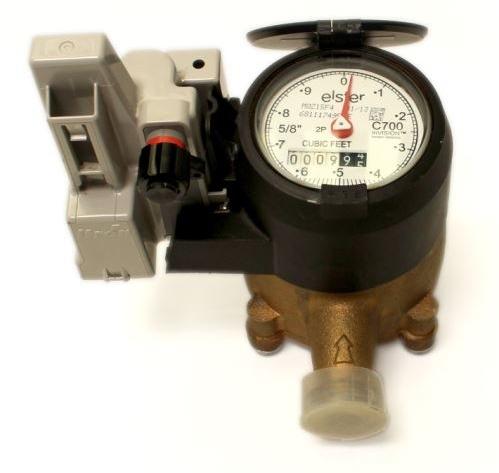Any individual may have their private rationale in relation to Low Water Pressure in the House?.

Low water stress in your home can be an irritating trouble, impacting everything from bathing to washing meals. If you're experiencing weak water circulation, there are several possible causes and options to explore. In this guide, we'll go over usual factors for low water pressure and functional steps to resolve the issue properly.
Intro to Low Water Pressure
Low tide pressure occurs when the circulation of water from your taps, showers, and other fixtures is weaker than normal. This can make daily tasks more challenging and less reliable. Recognizing the root causes of low tide pressure is important to finding the ideal service.
Common Causes of Low Tide Stress
Faulty Stress Regulatory Authorities
Pressure regulatory authorities are responsible for maintaining constant water stress in your house. If they malfunction, it can lead to low tide pressure or unequal circulation throughout the house.
Community Water System Issues
Sometimes, the problem exists outside your home. Metropolitan supply of water concerns, such as main line leaks or upkeep work, can momentarily lower water pressure in your location.
Pipe Obstructions
Gradually, pipes can become obstructed with natural resource, debris, or particles, limiting the circulation of water. This is a common concern in older homes with galvanized steel pipes.
Rust
Corrosion within pipelines can lead to leaks and minimized water stress. Corrosion accumulation can tighten water circulation, specifically in maturing plumbing systems.
Just How to Identify Low Tide Pressure
Checking Pipes
Evaluate visible pipes for signs of leakages, corrosion, or obstructions. Take note of any type of uncommon noises, such as banging or rattling pipelines, which might show problems within the plumbing system.
Consulting with a Plumber
If you're not able to pinpoint the source of low tide pressure, consider hiring an expert plumber to carry out a comprehensive inspection. They can determine underlying problems and recommend suitable options.
Inspecting Faucets and Components
Begin by evaluating the water pressure at various taps and fixtures throughout your home. If the concern is isolated to certain areas, it may indicate localized issues.
Do It Yourself Solutions to Repair Low Tide Stress
Flushing Water Heater
Debris accumulation in the hot water heater can limit flow and lower effectiveness. Purging the tank regularly helps get rid of debris and keep optimum performance.
Inspecting Stress Regulatory Authority
Guarantee that the pressure regulator is working properly. Adjusting or changing the regulatory authority can help restore proper water stress throughout your home.
Cleaning Up Aerators and Showerheads
Natural resources can gather in aerators and showerheads, reducing water flow. Remove and cleanse these components consistently to improve water pressure.
Cleaning Clogs in Water Lines
For minor blockages, try utilizing a plumbing serpent or chemical drainpipe cleaner to clear blockages in pipelines. Beware when making use of chemicals and adhere to safety and security guidelines.
When to Call a Specialist Plumber
If DIY efforts fall short to fix the concern or if you believe significant plumbing troubles, it's best to seek assistance from a certified plumber. They have the experience and tools to attend to intricate concerns securely and efficiently.
Preventive Measures to Keep Water Pressure
Installing a Pressure Booster
Think about setting up a pressure booster pump to enhance water stress in locations with continually low flow. This can be especially useful for multi-story homes or buildings with high-demand fixtures.
Surveillance Water Usage
Be mindful of water usage behaviors and prevent ill-using the plumbing system. Simple adjustments, such as shocking showers and laundry tons, can aid maintain appropriate water stress.
Regular Maintenance
Set up routine upkeep for your plumbing system to avoid issues such as rust, leaks, and obstructions. Dealing with small troubles early can aid prevent even more considerable repair work later on.
Verdict
Dealing with low tide pressure can be aggravating, but determining the underlying reasons and implementing ideal services can bring back optimum flow throughout your home. Whether it's cleaning aerators, evaluating pipelines, or seeking advice from a plumber, taking proactive actions can ensure a constant supply of water for your daily demands.
9 Solutions to Low Water Pressure
If you have ever struggled to rinse the shampoo out of your hair, washed your hands under a trickle of water, or been forced to wait for your washing machine to complete a cycle, then you have experienced the nuisance of low water pressure. Low water pressure can turn a simple task into a hassle, but once you identify the cause, either the necessary plumbing fix or a water booster pump can drastically improve your water pressure. In this article, you can learn about nine common causes of low water pressure and how to resolve low water pressure in your home.
How do you know if you have low water pressure?
Testing your home’s water with a pressure gauge is the easiest way to find out if you have low water pressure. Pressure gauges are simple and inexpensive, and once installed, will allow you to check your water pressure with a quick glance.
If your water is from a municipal water supply, select an outdoor faucet near where the main water line enters your home. If your water is from a well, select a faucet that is close to the well’s pressure tank. Attach the pressure gauge to the faucet and tighten it. To get an accurate reading, make sure water isn’t being used anywhere else inside or outside the house, and then fully turn the faucet on. Once the faucet is on, you can read the water pressure on the gauge’s dial. Typical home water pressure should be between 40 and 50 psi, so if the dial reads less than 40 psi, you have low water pressure.
Do water booster pumps increase water pressure?
A water booster pump is a centrifugal pump that improves low water pressure and increases water flow. Much like how a fan’s blades create a gust of air, a water booster pump’s rotating impeller draws water in and then pushes it out with increased force. This force raises the water pressure in a system. A water booster pump is installed where the main water line enters your home, so water pressure is improved in every tap and appliance.
What causes low water pressure?
1. Hard water
If you have hard water, scale can accumulate in your pipes, restrict the water flow, and reduce your water pressure. Hard water has a high mineral content, specifically calcium and magnesium, and scale is formed when these mineral salts dissolve.
The solution: When scale buildup is severe enough to restrict water flow and reduce water pressure, the best solution is to replace your pipes. Products like CLR Calcium, Lime, and Rust remover can diminish scale, but as the scale comes off it may clog your pipes, creating another costly plumbing problem. Not to mention, it is never a good idea to put harsh chemicals in the pipes that supply your drinking water. To prevent scale in the future, we recommend installing a water softener.
The main water shut off valve is not open.
If your water pressure has suddenly decreased and you recently had a repair done, make sure the main water shut off valve is fully open. Most plumbing repairs require the water to be shut off, but if the valve is not completely opened afterward, your water pressure will be restricted.
The solution: Locate your main shut off valve, which is installed where the main water line enters your home, and fully open it by turning it counterclockwise.
A municipal water problem
Low water pressure may not have to do with your own plumbing system. Just like your home’s water supply, the municipal water supply is subject to problems that can cause low water pressure, such as leaks and corrosion.
The solution: Call the municipal water supply to report your low water pressure. Your input may alert them to the problem and will ensure your water pressure is restored as quickly as possible.
Faulty pressure regulator
A pressure regulator is a valve that reduces incoming water pressure as water flows into your home from the main service line. High water pressure can damage pipes and plumbing fixtures, so a pressure regulator is installed to protect your home plumbing system. Most are set to 50 pounds per square inch (psi), but if yours is set lower, your water pressure will feel low. If your pressure regulator is set to 50 psi but your pressure still feels low, it may be broken or clogged.
The solution: Adjust your pressure regulator’s setting to 50 psi if it is currently set lower. If your pressure regulator is faulty, ask a plumber to replace it.
A leak
A leak can reduce water flow and water pressure. To determine if you have a leak, turn all the faucets off inside and outside of your home. About an hour later, check your water meter. If it indicates you are using water, you have a leak.
The solution: Enlist the help of a licensed plumber to locate and repair the leak. Once the repairs are complete, your water pressure should return to normal.
https://www.freshwatersystems.com/blogs/blog/what-causes-low-water-pressure-and-how-to-improve-it

I hope you enjoyed our post on 4 Ways to Troubleshoot Low Water Pressure. Thanks for finding the time to read our blog. You should pause to promote this blog posting if you enjoyed reading it. Thank-you for taking the time to read it.
Set An Appointment